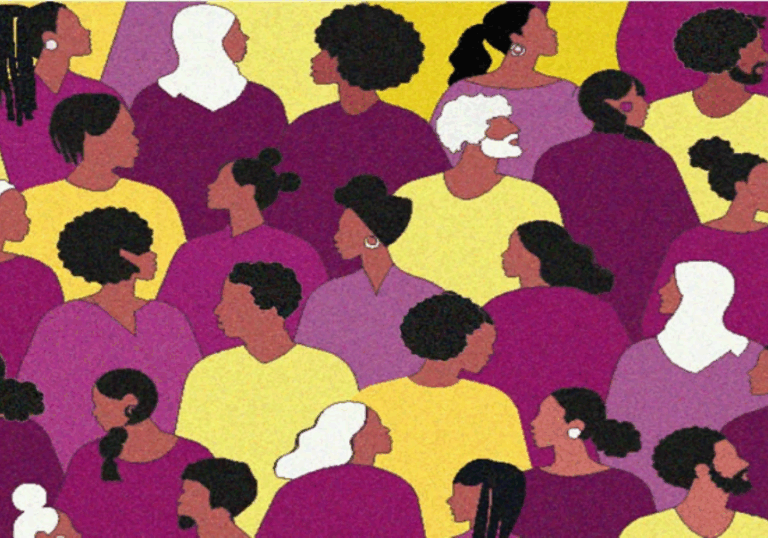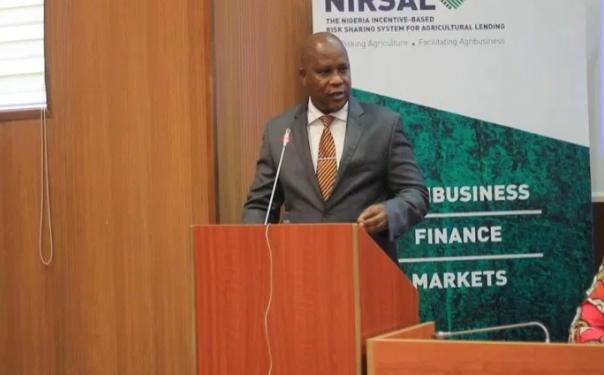While the world battles the coronavirus pandemic, people living in the 16 local government areas in Ekiti State and medical workers said their concern is how to access basic healthcare.
From June 30 to August 26, doctors working at government health facilities in the state under the aegis of the National Association of Government General Medical and Dental Practitioners (NAGGMDP) downed tools.
The doctors said they decided to embark on the strike to protest manpower shortages and poor working condition in spite of the biting COVID-19 pandemic.
According to the union, apart from the unavailability of basic necessities such as clean water, electricity, scanning and x-ray machines, among others, the uneven distribution of doctors to basic, secondary and tertiary healthcare institutions in the state has placed a burden on them.
They claim the scale is heavily tilted to favour the state’s two tertiary health facilities – the Ekiti State University Teaching Hospital (EKSUTH) and the Federal Medical Centre (FMC).
They said only 71 medical doctors serve the state’s 153 primary and secondary healthcare facilities.
According to NAGGMDP, the 153 facilities comprise three specialist hospitals, 19 general hospitals, and 131 primary healthcare centres.
Findings
A PREMIUM TIMES investigation into the complaints raised by the doctors revealed acute neglect of the primary and the secondary healthcare subsectors in the state.
But the government insisted doctors working in the state are up to 700 and that the picture being painted by the doctors are false.
However, visits to some of the health facilities in the state revealed that only one medical doctor is attached to a general hospital compared to more than 60 available in such a secondary healthcare facility in Lagos.

From Ode General Hospital in Gbonyin Local Government Area (LGA), to Oye General Hospital in Oye LGA, Ayede General Hospital, also in Oye LGA, and even the Government House clinic in Ado-Ekiti, it is one doctor per facility.
Statistics provided by the doctors’ association confirmed that across the 16 LGAs, there are only seven doctors distributed among seven LGAs to man these health centres, while the remaining nine LGAs are without doctors.
The seven doctors are allocated to Ado, Ikole, Oye, Ido, Ijero, Ekiti East and Ekiti South LGAs. The remaining nine local government areas without doctors are Ikere, Gbonyin, Efon, Ekiti West, Emure, Ilejemeje, Irepodun/Ifelodun, Ise/Orun and Moba.
According to the doctors’ union, 64 medical doctors are distributed among the 22 general, and specialist hospitals.
Poor working condition
The doctors said the poor working conditions across the 153 facilities have caused an exodus of doctors from the two key levels of healthcare in the state.
In a letter dated May 29 addressed to the governor, and signed by the association’s chairperson and secretary, Kolawole Adeniyi and Adeleye Crave, the doctors complained about the situation.
They said between October 2019, when a comprehensive report on the state of the facilities and suggested revival plans were presented to the government, and May 29 when a 21-day ultimatum for strike notice was issued to the state, 24 medical doctors including 11 consultants had left the state’s service.
The data shows that on a monthly basis, an average of three doctors leaves the service at the primary and secondary healthcare in the state for either the tertiary health facilities or in search of better opportunities outside the state.
“As recently as seven months ago before we wrote our last letter and position paper on achieving the fourth point of the four-point agenda of this government, there were 96 doctors at the hospitals’ management board (HMB) including not less than 16 consultants. It is disheartening to know that as at (sic) today, the HMB is left with just five consultants and less than 67 medical officers to man our three specialist hospitals and 19 general hospitals. It will shock you to know that Ekiti East Local Government has just one doctor. Many of our general hospitals have only one doctor providing care to a whole community such as Omuo, Ilawe, and Ilupeju-Itapa, just to mention a few,” the letter added.

Apart from the doctors, other healthcare workers in the state, under the umbrella of the Joint Associations and Unions of Ekiti State Healthcare Workers, also recently embarked on a three-day warning strike, complaining of similar challenges.
The union comprises the state chapters of the National Association of Nigerian Nurses and Midwives (NANNM), Medical and Health Workers Union of Nigeria (MHWUN) and the Nigerian Union of Allied Health Professionals which comprises pharmacists, among others.
The chairperson of the union, Femi Ajoloko, accused the government of subjecting his members to untold hardship.
According to Mr Ajoloko, who spoke with PREMIUM TIMES on the phone, ”for the past 10 years, healthcare workers in the state have not been receiving statutory hazard allowance and other allowances including those for uniforms, skipping, among others.”
He said; “We have arrears of unpaid salaries and the government has consistently been making deductions from our salaries without remitting the same to appropriate purses such as cooperative societies. We had been managing and enduring these challenges but even at this critical time, the state has refused to consider us by paying the COVID-19 special hazard allowance. After a series of letters, when we met with government representatives on Monday, we were told the state does not have money.”
When this reporter visited Ode General Hospital, a healthcare worker there said the last time the hospital, and indeed, the whole of the community had electricity, was six years ago.
The paramedic, who identified herself simply as Mrs Adedun, said the power generator the community donated to the hospital had also developed a fault.
Demands
The doctors demanded the immediate implementation of skipping allowance with full consolidated medical salary structure (CONMESS), financial benefits of promotion up to date, full rural posting allowance, payment of teaching allowance, and regular hazard allowance.
They also asked for “the immediate payment of special COVID-19 hazard allowance as contained in the MoU between the federal government and health workers’ unions, payment of three-month salary arrears, and consequential adjustment of our salary based on the new minimum wage law.”
The doctors also requested an upgrade of the 153 healthcare facilities including the provision of basic amenities such as power, water, x-ray and scanning machines, among others.
Consequences
At about 10:45 a.m on August 11, at Ode-Ekiti GH, 32-year-old Esther Owoyemi was spotted with her face buried in her palms, as she sobbed quietly.
Mrs Owoyemi was one of the few pregnant women who had ignored the doctors’ strike in the state to keep their antenatal appointment. But for the second time since July, she was again disappointed as doctors were not at their duty posts.
According to Mrs Owoyemi, Isinbode-Ekiti, where she resides, does not fall under the same local government area as Ode, but she chose the hospital because it is nearer than the one located in Omuo-Ekiti, headquarters of Ekiti East Local Government Area.
Apart from the distance, the mother of two said the general hospital in Omuo-Ekiti does not have a scanning machine.
According to a nurse at the hospital, who asked not to be named for fear of victimisation, the scanning machine was installed in 1999 and has been bad for some years.
On this day, Mrs Owoyemi’s priority was not about COVID-19 but rather her safety and that of her unborn baby. She said but for the insistence of the hospital management, she was not prepared to use her facemask.
On her part, 72-year-old Ilesanmi Janet was also diagnosed with hypertension and diabetes at the hospital. On this day, she was visiting for the third time to see a doctor without success.
The septuagenarian, who was visibly devastated, said “If the strike continues, I can either go to Ado-Ekiti or Ido. But they are far from us.”
Mrs Ilesanmi was referring to the Ekiti State University Teaching Hospital (EKSUTH), Ado-Ekiti- an autonomous tertiary health facility for teaching of medical students, and the Federal Medical Centre (FMC), Ido-Osi- a federal government-owned healthcare facility.

Also, Olusuyi Johnson, who also suffers from high blood pressure, narrated the same ordeal.
The 74-year-old Olusuyi, a resident of Ode-Ekiti, said he had been checking on the hospital almost on a daily basis if he would be lucky to meet the hospital’s only doctor, whom he noted ”had been attending to critical cases on compassionate grounds”.
”But they said my case isn’t that severe, and so couldn’t be scheduled for the doctor,” he said.
The situation was the same at the general hospitals in Oye-Ekiti, Ayede-Ekiti, and the specialist hospital, Ikole-Ekiti, visited by our reporter.
The hospitals were deserted as a few healthcare workers on duty only attended to cases that required first aid before referring patients to the two tertiary health institutions depending on which is nearer to the patients.
On August 20, when this reporter visited EKSUTH, the healthcare workers, who spoke on condition of anonymity, also complained of poor working conditions, saying for many months, the government has failed to account for deductions in their salaries.
“We just resumed from a three-day warning strike over these issues,” the immediate past chairperson of the state’s chapter of the Nigeria Medical Association (NMA), Tunji Omotayo, said.
Government’s response
Reacting to the development, Muyiwa Olumilua, the then state commissioner for information, in a statement on July 30, said there are 700 medical doctors working in Ekiti State.
He said the government acknowledged the challenges facing doctors and other healthcare workers but he blamed the development on the dwindling revenue accruable to the state, adding that the dire situation has been worsened by the COVID-19 pandemic.
Mr Olumilua said; “It is widely acknowledged that most developing nations and subnational are experiencing the shortage of doctors in the health sector, including Ekiti State. It is, however, important to clarify that there are adequate doctors in both public and private sectors in Ekiti State to meet the healthcare needs of its residents.

“We are working to improve our patient-doctor ratio as well as to ensure affordable healthcare in every part of Ekiti State but, the impression that Ekiti State residents might need to go out of the state to access healthcare is not accurate. There are over 300 doctors in the service of Ekiti State Government and more than 700 doctors cumulatively in the state.”
The statement added that the government empathised with the concerns of the association, even as it explained that the state could not meet all the doctors’ demands especially due to the global economic challenges.
“The statements of income and expenditure of the state since the outbreak of the COVID 19 Pandemic were made available to the association as proof of the state’s financial position,” Mr Olumilua wrote.
Also speaking on the phone with our reporter, the then commissioner for health, Mojisola Yaya-Kolade, said the state has launched a health insurance scheme.
The programme, which is fashioned after the federal National Health Insurance Scheme (NHIS) is aimed at providing quality and affordable healthcare to the state’s more than 3.2 million population.
‘Not impressed’
But the doctors said the governor was merely playing to the gallery. They argued that the health insurance scheme is a misplaced priority as the quality healthcare is a mirage in the state.
Also, according to the association’s chairperson, Kolawole Adeniyi, EKSUTH’s staff are not directly paid by the state government. He said the teaching hospital is an autonomous institution that complements its budgetary allocation with internally generated revenues.
Meanwhile, relying on the statistics of 700 doctors available to the state as provided by Mr Olumilua, the reality shows that the doctor-patient ration in Ekiti currently stands at 1:4571.
This is far from the 1:600 recommended by the World Health Organisation (WHO) and worse than the national average which, of March 2020, stood at 1: 2753.
Experts speak on consequences
The Universal Health Coverage (UHC), which is the 8th target of Goal 3 of the Sustainable Development Goals (SDGs), sets 2030 as the deadline to achieving the goal globally, and Nigeria has committed itself towards attaining what now seems a herculean task.
One of the key strategies being deployed by the government towards achieving this target is through the launch of NHIS which aims to ensure the availability of quality but affordable healthcare.
Osahon Enabulele, a consultant surgeon and former President, Nigerian Medical Association (NMA), said since 2005 when Nigeria formally launched the scheme, ”not more than four per cent of Nigeria’s population has been captured under the scheme”.
Mr Enabulele, in a treatise entitled; “Achieving Universal Health Coverage in Nigeria: Moving Beyond Annual Celebrations to Concrete Address of the Challenges,” and published earlier this year, critiqued Nigeria’s journey towards achieving UHC.
Part of the reasons identified by the scholar for Nigeria’s poor run is the uneven distribution of healthcare workers among the three levels of primary, secondary and tertiary healthcare
Similarly, Adewale Adeduntan, the social mobilisation manager for ActionAid Nigeria, said based on the current realities as exposed by the statistics coming from Ekiti State, ”Nigeria is on a long journey to attaining the SDGs and UHC”.
He said; “The attainment of universal health coverage in Nigeria is totally unrealistic because of the numerous and complex constraints staring us in the face as a nation. The factors limiting Nigeria’s health outcomes are both demand and supply-side including inadequate financing, weak governance and enforcement, inadequate infrastructure and poor service quality, household poverty and insufficient risk pooling. By default, the private health sector has grown rapidly over the past decades and now provides over 65 per cent of healthcare services.”
![eksuth-entrance-gate-1[1] eksuth-entrance-gate-1[1]](https://covid19realitycheck.wscij.org/wp-content/uploads/2020/11/eksuth-entrance-gate-11.jpeg)


